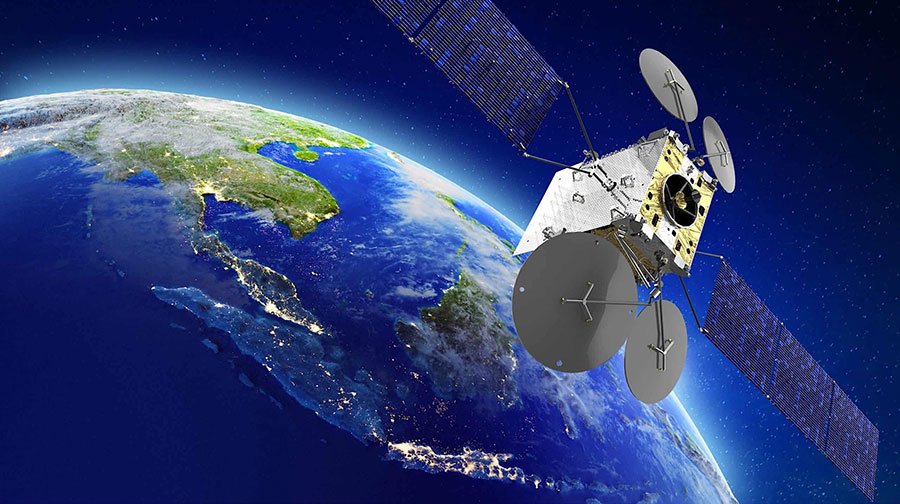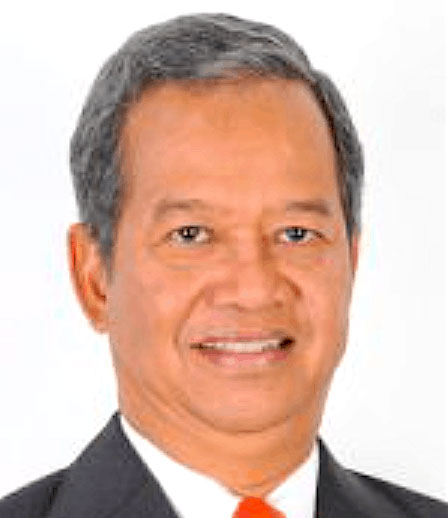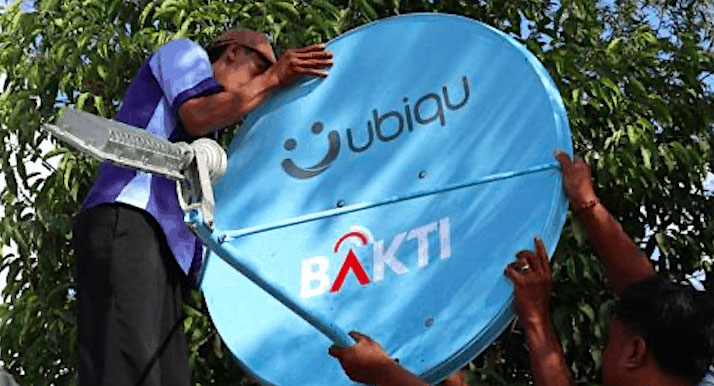 PT Telkom Satelit Indonesia (Telkomsat) ordered the HTS 113BT C- and Ku-band high-throughput satellite (32+ Gbps) from Thales Alenia Space for on-ground delivery in 2024. The ITU has set a deadline of December 2024 for Indonesia to fill the 113 degrees East slot, although a deadline extension is always possible at the ITU. Credit: Thales Alenia Space
PT Telkom Satelit Indonesia (Telkomsat) ordered the HTS 113BT C- and Ku-band high-throughput satellite (32+ Gbps) from Thales Alenia Space for on-ground delivery in 2024. The ITU has set a deadline of December 2024 for Indonesia to fill the 113 degrees East slot, although a deadline extension is always possible at the ITU. Credit: Thales Alenia Space
SEOUL — Indonesia’s head to head satellite broadband match — SpaceX Starlink allied with domestic telco PT Telkom versus satellite fleet operator Pasifik Satelit Nusantara (PSN) — will test whether a Starlink partnership of this kind is a winning strategy against an established local satellite broadband provider.
PSN Chief Executive Adi Adiwoso, who has long said global LEO broadband constellations will be unable to compete against national satellite operators with geostationary-orbit assets for remote markets, said he’s confident that the Starlink-PT Telkom association will run aground in Indonesia’s rural areas.
“We sold our program for 15 Gbps to the government, including a hub service, for S50 per mbps,” Adiwoso said here Oct. 18 during the APSCC 2022 Conference here. “Starlink and PT Telkom have publicly announced a price of $200 per mbps. The pressure will be coming back to them.”
Indonesia is home to one of the world’s most aggressive satellite broadband rollout programs, designed to provide connectivity to the country’s many remote locations.
The Ministry of Communications and Information Technology in June announced it granted landing rights to PT Telkom’s Telkomsat for the Starlink service. The license is for operations of a network connecting Telkom’s network backbone with Wi-Fi towers via fiber-optic cable. It specifically excludes retail services and direct access by customers.
“TelkomGroup welcomes the presence of Starlink as a complement to broadband telecommunications business services in Indonesia... especially the B2B market segment,” Telkomsat President Director Lukman Hakim Abd Rauf said in a statement when the landing rights were approved.
 Adi R. Adiwoso of PSN. Credit: APSCC
Adi R. Adiwoso of PSN. Credit: APSCC
Adiwoso said he was still unclear about what level of capacity Starlink can provide in Indonesia, and how the Starlink service will adapt to the need for very different levels of capacity needed for different regions of the country.
PSN’s current agreement under the government’s broadband deployment plan is to provide a 110-Gbps bub and 18 gateway Earth stations. Some 20,000 fixed broadband terminals will be operational this year. Two more GEO-orbit satellites, with a combined 320 Gbps of capacity, will be launched in 2023.
With a pricing advantage of $50 versus the $200 for Starlink, PSN already has an advantage. But Starlink has been able to sharply reduce its prices in recent months in other regions, sometimes by as much as 50%, to secure market share.
And if that happens in Indonesia?
“We still believe Starlink wants to have a direct distribution company in Indonesia, which is not allowed — period,” Adiwoso said. “So they have to go through PT Telkom. PT Telkom will defend is margin. So if they [Starlink] drops the price, we’re still pretty good — unless they drop it far below $50. I’d like to see them try.”
The question nagging any satellite broadband provider in a market like Indonesia, with many remote villages that are difficult to reach, is how to cut the delivery and installation charges and the maintenance of sites to limit service interruptions from power outages.
 Indonesia’s Bakti Satria-1 satellite broadband program: antennas from China’s ubiqu, a satellite from Thales Alenia Space, hubs from Hughes Network Systems, network monitoring from Kratos, 11 gateways and a SpaceX launch — and $100 per mbps that may set a benchmark in Southeast Asia. Credit: Bakti
Indonesia’s Bakti Satria-1 satellite broadband program: antennas from China’s ubiqu, a satellite from Thales Alenia Space, hubs from Hughes Network Systems, network monitoring from Kratos, 11 gateways and a SpaceX launch — and $100 per mbps that may set a benchmark in Southeast Asia. Credit: Bakti
“The space segment might cost $50 or $100, but we have found out that when you start reaching that point, the installation charges and logistics charges and operations and maintenance become quite a large chunk of your cost. And if you don’t have a distribution chain, you will have a lot of failures providing the SLA.”
SLAs, or service-level agreements, stipulate connectivity requirements for many government-sponsored universal service obligation contracts. Starlink typically resists signing SLAS and Committed Information Rates, saying its service is good enough not to need them.
But Starlink’s costs are higher for the service’s sophisticated, phased-array antenna than for a conventional two-way parabolic antenna deployed by PSN for its satellites.
“The cost of a terminal for a GEO is less than $500,” Adiwoso said. “The installation to rural areas costs $1,OOO. So the cost to install fixed broadband to a rural location is $1,500. If you put in a LEO, it will be $3,000.”
SpaceX Starlink has said it has gradually reduce the production cost of a Starlink terminal as it has gained experience and increased production volume. Adiwoso’s point is that even with a drop in unit cost, the figures for delivery and installation and maintenance will not change.
Read more from Space Intel Report.
